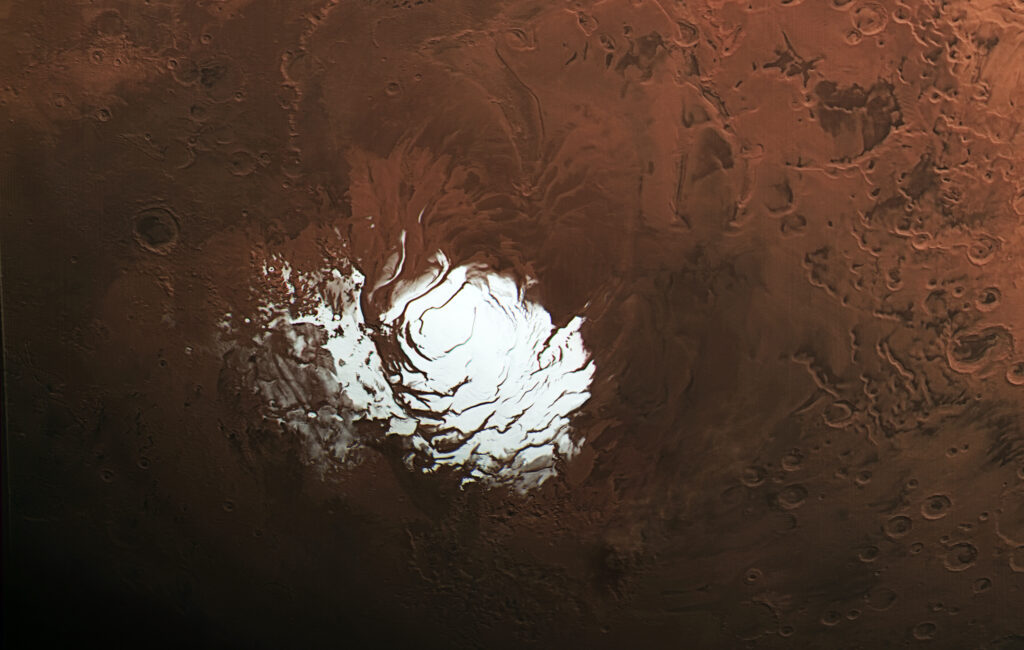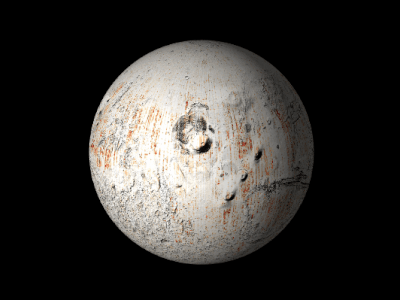
Liquid water previously detected under Mars’ ice-covered south pole is probably just a dusty mirage, according to a new study of the red planet led by researchers at The University of Texas at Austin.
Scientists in 2018 had thought they were looking at liquid water when they saw bright radar reflections under the polar cap. However, the new study published Jan. 24 in the journal Geophysical Research Letters found that the reflections matched those of volcanic plains found all over the red planet’s surface.
The researchers think their conclusion — volcanic rock buried under ice — is a more plausible explanation for the 2018 discovery, which was already in question after scientists calculated the unlikely conditions needed to keep water in a liquid state at Mars’ cold, arid south pole.
“For water to be sustained this close to the surface, you need both a very salty environment and a strong, locally generated heat source, but that doesn’t match what we know of this region,” said the study’s lead author, Cyril Grima, a planetary scientist at the University of Texas Institute for Geophysics (UTIG).
The south polar mirage dissolved when Grima added an imaginary global ice sheet across a radar map of Mars. The imaginary ice showed how Mars’ terrains would appear when looked at through a mile of ice, allowing scientists to compare features across the entire planet with those under the polar cap.
Grima noticed bright reflections, just like those seen in the south pole but scattered across all latitudes. In as many as could be confirmed, they matched the location of volcanic plains.
On Earth, iron-rich lava flows can leave behind rocks that reflect radar in a similar way. Other possibilities include mineral deposits in dried riverbeds. Either way, Grima said, figuring out what they are could answer important questions about Mars’ history.

Although there may not be liquid water trapped under the southern polar cap, there is plenty of water ice on Mars, including in the thick polar caps. In fact, the new study hints at Mars’ wetter past.
Isaac Smith, a Mars geophysicist at York University, believes the bright radar signatures are a kind of clay made when rock erodes in water. In 2021, Smith, who was not part of either study, found that Earth-based clays reflected radar brightly, just like the bright spots in the 2018 south pole study.
“I think the beauty of Grima’s finding is that while it knocks down the idea there might be liquid water under the planet’s south pole today, it also gives us really precise places to go look for evidence of ancient lakes and riverbeds and test hypotheses about the wider drying out of Mars’ climate over billions of years,” he said.
Grima’s map is based on three years of data from MARSIS, a radar instrument launched in 2005 aboard the European Space Agency’s Mars Express that has accumulated tremendous amounts of information about Mars. Grima and co-author Jérémie Mouginot, a research scientist at the Institute of Environmental Geosciences in Grenoble, France, plan to dig further into the data to see what else MARSIS can turn up about Mars.
For Smith, the study is a sobering lesson on the scientific process that is as relevant to Earth as it is to Mars.
“Science isn’t foolproof on the first try,” said Smith, who is an alumnus of the Jackson School of Geosciences at UT Austin. “That’s especially true in planetary science where we’re looking at places no one’s ever visited and relying on instruments that sense everything remotely.”
Grima and Smith are now working on proposed missions to find water on Mars with radar, both as a resource for future human landing sites and to search for signs of past life.
The current study was partially funded by NASA and CNES, the French national space agency. The Institute of Environmental Geosciences (Institut des Géosciences de l’Environnement) is a joint research unit of the French National Centre for Scientific Research, Université Grenoble Alpes and other institutions in France. UTIG is a research unit of the UT Jackson School of Geosciences.
This story is published jointly with the American Geophysical Union.
For more information, contact:
Constantino Panagopulos, University of Texas Institute for Geophysics, 512-574-7376
Monica Kortsha, Jackson School of Geosciences, 512-471-2241
Anton Caputo, Jackson School of Geosciences, 512-232-9623
